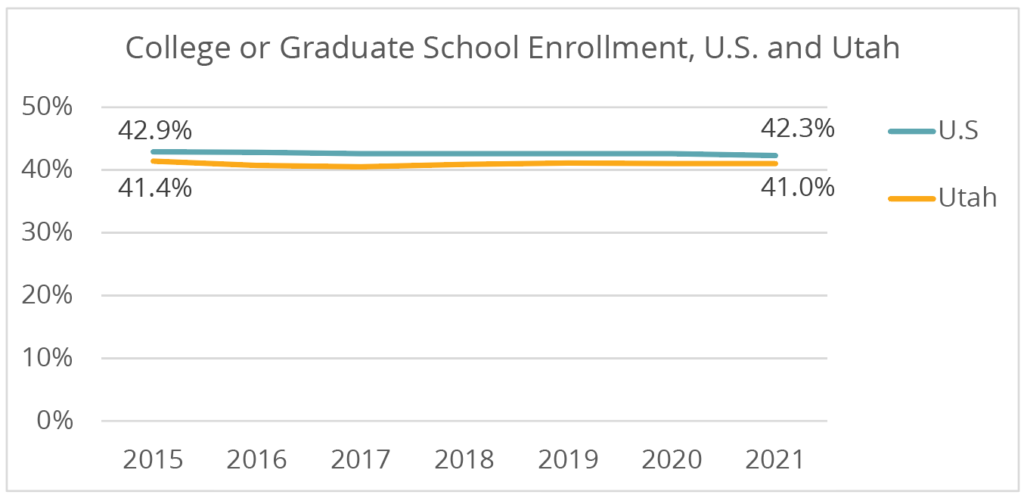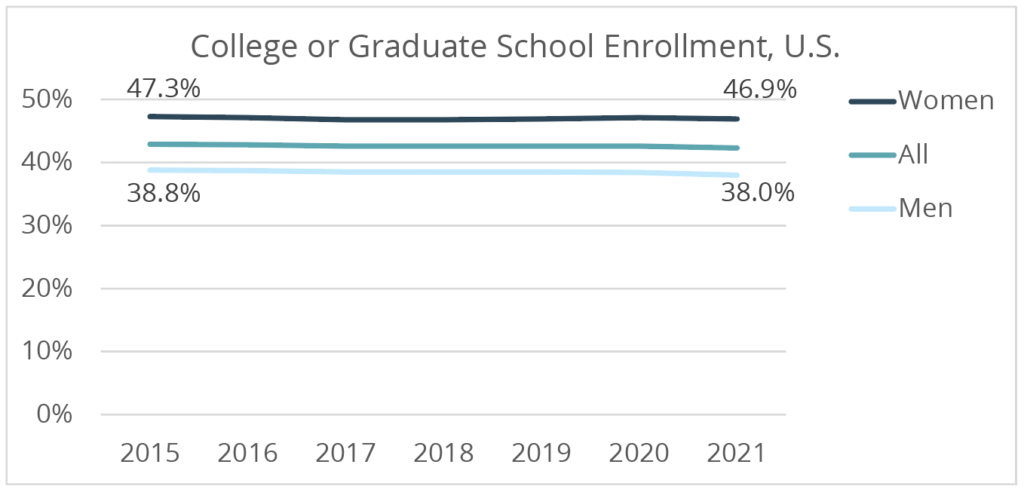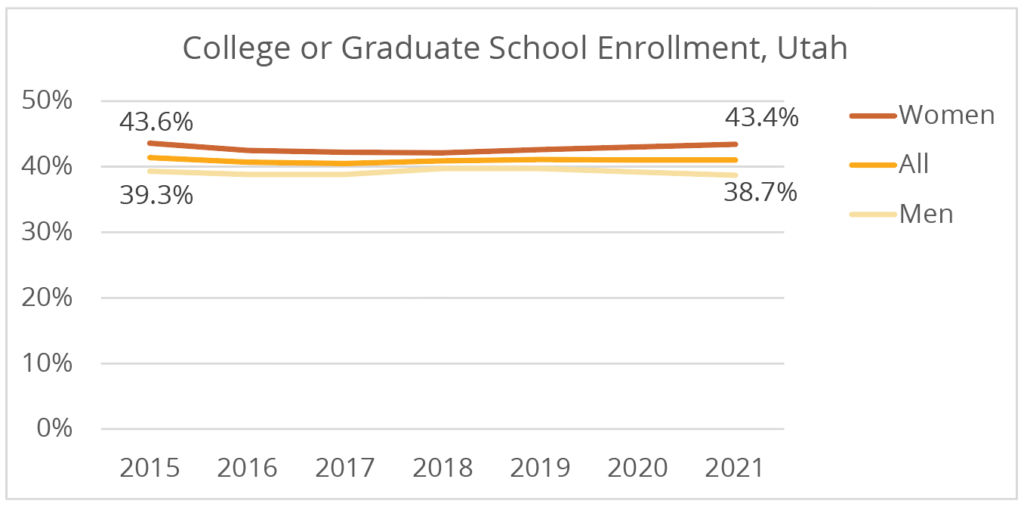Utah is just behind the U.S. for the proportion of young people in college. Utahns ages 18 to 24 are just over one percent less likely to be enrolled.
Further, enrollment seems to be decreasing. Why? There may be a lot of explanations, including a robust economy and a feeling that the costs of college may not ultimately be worth the rewards.
While enrollment levels look similar between Utah and the U.S., when examining the data more closely, differences emerge. Utah men are just a sliver more likely to be enrolled than their peers nationwide – 39% compared to 38%. However, Utah women are less likely – 43% compared to 47%.



What is going on? That is an important question. It has a lot to do with demographic differences between Utah and the rest of the nation. For example, Utahns start families at a much earlier age than their peers nationally. As the Utah Foundation has previously written, having a young family can put too much financial- and time-pressure on some college students.
Furthermore, the decrease in enrollment since 2015 is greater for men than women. That may have to do with education for men being slightly more tied to the economy.
Nonetheless, Utah has the 3rd highest educational attainment in the nation when it comes to post-secondary ed including high-quality certificates and certifications. Part of that is due to our young population. (See the Utah Foundation’s recent Significant Statistic for more details.)
These high-quality certificates and certifications are at the center of the Utah Foundation’s upcoming release, Alternatives to Four-Year Degrees. We’ll be examining the options for all those young Utahns – both men and women – who are not pursuing bachelors or graduate degrees.
There are a lot of options. The key is helping connect students with the options that may increase Utahns’ quality of life.
Data source: U.S. Census Bureau, American Community Survey, 5-year sample.
Note: The Utah Foundation used the 5-year sample for comparison due to the margins of error for Utahns. When looking at the 1-year sample for the U.S., the decrease in enrollment over the period is much more pronounced: 42.3% to 40.9% – with a 2.0% drop for men compared to a 0.7% drop for women.
Categories:

